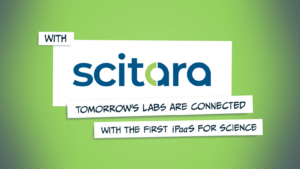White wine and steak. Chocolate and cheese.
Some things just don’t pair well. And in the world of lab modernization, data connectivity and data aggregation are two of those things.
Independently of one another, each plays a vital role in liberating data from the siloed, point-to-point connections that delay scientific discovery. But when combined into a single proprietary platform, they form a bigger obstacle than the one they were designed to eliminate.
It’s a faulty problem/solution logic that poses a real danger for labs seeking to complete their digital transformation. And here’s what it looks like:
Data is now trapped in a central, proprietary repository—which is just a bigger data lake, with the same barriers to accessibility and shareability. And if the data connectivity and data aggregation layers are delivered through a single, vendor-controlled solution, there’s no way around it.
Digital decoupling: A better solution
Decoupling the data connection layer from the data aggregation layer enables lab personnel to maintain total control of the 1s and 0s they’ve mobilized.
Independent connectivity allows scientists to decide where their data goes. And independent aggregation ensures that lab workflows don’t get locked into a vendor’s proprietary database structure.
It’s a simple, scalable solution that enables true peer-to-peer networking—and delivers true data mobility. And that’s not all digital decoupling can do.
It can:
- Make it easier to scale up digital services and improve app performance
- Reduce the cost of incorporating new functionalities
- Enable incremental improvements that comfortably lead the way to systematic change
- Accelerate development cycles and speed-to-market
- Improve the flexibility and responsiveness of IT systems
Everyone wins.
Meet the modern lab
Scitara’s Scientific Integration Platform decouples data connectivity from data aggregation. It’s a catalyst for true data mobility—and an iPaaS for science.
It works with legacy systems. It works with future systems. It works to keep data where it belongs—in the hands of scientists advancing human knowledge.
Connect with an industry expert to learn more about how digital decoupling can help you gain data mobility without sacrificing data control.
